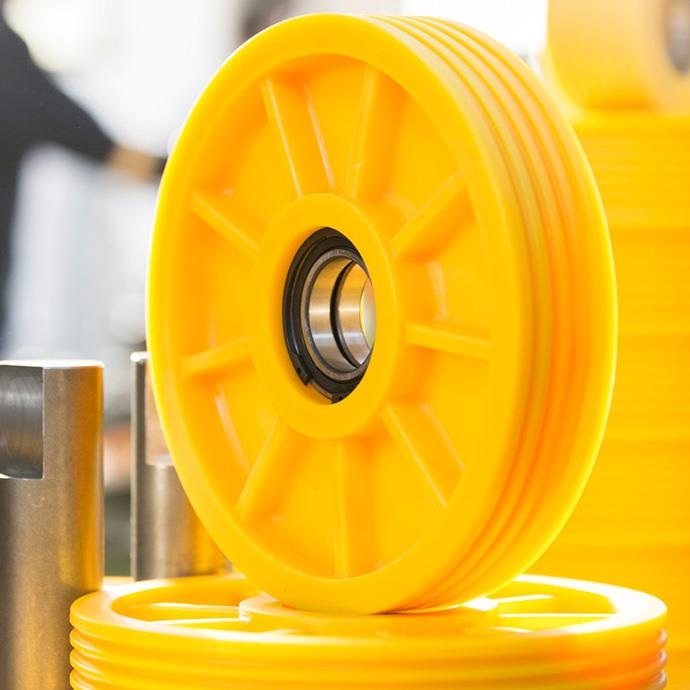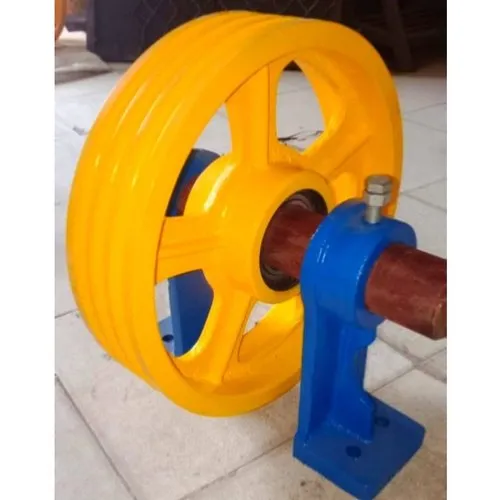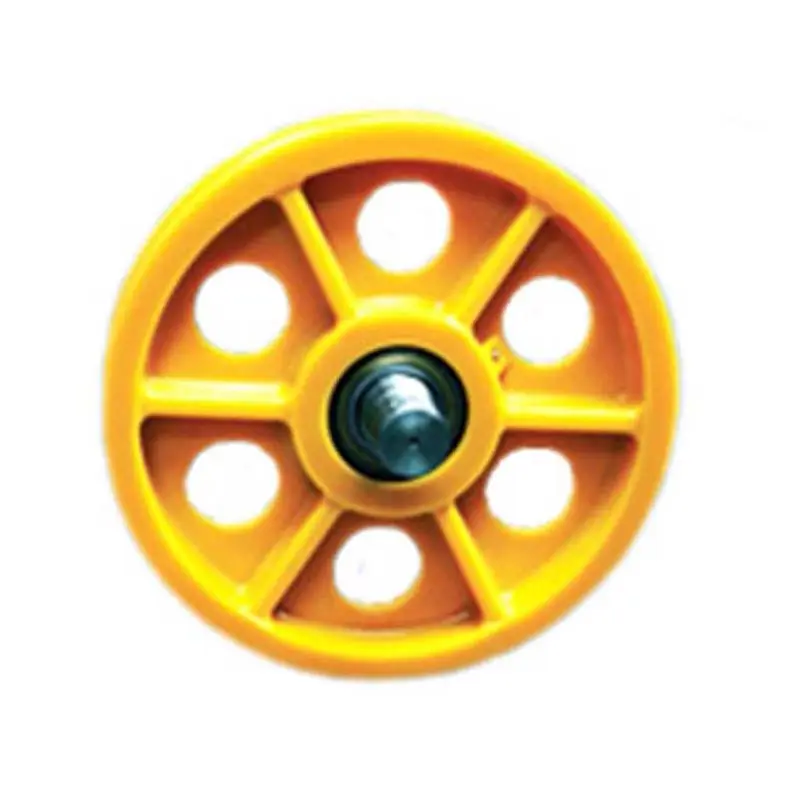Product Description
| Payment term | L/C | L/C amount above 40.000 usd,we can accept L/C at sight | |
| T/T | EXW | 30% T/T in advance,paid the balance before shipment | |
| FOB | |||
| CIF | 30% T/T in advance,paid the balance against copy of B/L |
||
| CFR(C&F) | |||
| Paypal | amount lower than 4000usd | ||
| West | |||
| Delivery time | 15~35days after receiving payment for 1 container |
| We welcome use trade assurance,you`ll enjoy: 100% product quality protection 100% on-time shipment protection 100% payment protection for your covered amount |
| Warranty: | 12 Months |
|---|---|
| Application: | Double Beam Crane, Gantry Crane, Bridge Crane, Tower Crane, Single Grinder Crane, Lifting Platform, Small Crane |
| Type: | Chain Hoist |
| Sling Type: | Chain |
| Lift Speed: | 2~8m/min |
| Maximum Lifting Height: | 3m |
| Samples: |
US$ 155.7/Piece
1 Piece(Min.Order) | |
|---|
| Customization: |
Available
| Customized Request |
|---|
How do lifting pulleys contribute to the longevity and reliability of lifting equipment?
Lifting pulleys play a significant role in enhancing the longevity and reliability of lifting equipment. They contribute to the smooth functioning of the lifting system and help minimize wear and tear on various components. Here’s a detailed explanation of how lifting pulleys contribute to the longevity and reliability of lifting equipment:
1. Load Distribution: Lifting pulleys distribute the weight of the load evenly across the lifting system. By spreading the load over multiple ropes or cables, pulleys reduce the strain on individual components, such as cables, hooks, and attachments. This balanced load distribution minimizes the risk of overloading and premature failure of specific parts, thereby prolonging the lifespan of the lifting equipment.
2. Reduced Stress on Components: Lifting pulleys help to alleviate stress on various components of the lifting system. When lifting heavy loads, the force exerted on the cables or ropes can be substantial. By utilizing pulleys, the load is distributed across multiple ropes or cables, reducing the stress on each individual component. This reduction in stress helps prevent excessive stretching, bending, or breakage of cables, ensuring the reliability and longevity of the lifting equipment.
3. Efficient Force Transmission: Lifting pulleys facilitate efficient force transmission within the lifting system. As the load is distributed and redirected through the pulleys, the force is applied in a controlled and balanced manner. This efficient force transmission minimizes unnecessary strain on the lifting equipment and reduces the risk of sudden jerks or jolts that can cause damage or premature wear.
4. Improved Load Control: Lifting pulleys enable precise control over the lifting process, allowing operators to adjust the speed, direction, and position of the load with accuracy. This precise load control helps in preventing sudden or uncontrolled movements that can put stress on the lifting equipment. By ensuring smooth and controlled load handling, pulleys contribute to the longevity and reliability of the lifting equipment.
5. Reduction in Friction: Lifting pulleys are designed to minimize friction between the pulley and the ropes or cables. They often incorporate ball bearings or other low-friction mechanisms to ensure smooth rotation. By reducing friction, pulleys minimize wear on the ropes or cables, as well as on the pulley itself. This reduction in friction helps to extend the lifespan of the lifting equipment.
6. Protection Against Abrasion: Lifting pulleys can incorporate features such as protective coatings or linings to minimize abrasion and wear on the ropes or cables. These protective measures help prevent damage to the lifting equipment caused by repeated rubbing or contact with rough surfaces. By safeguarding against abrasion, pulleys contribute to the longevity and reliability of the lifting equipment.
7. Maintenance and Serviceability: Lifting pulleys are typically designed for easy maintenance and serviceability. They can be quickly inspected, lubricated, and replaced if necessary. Regular maintenance, including cleaning and lubrication of the pulleys, ensures their optimal performance and extends their lifespan. By facilitating routine maintenance, pulleys contribute to the overall reliability and longevity of the lifting equipment.
8. Compatibility and Interchangeability: Lifting pulleys are often designed to be compatible and interchangeable with various lifting systems and configurations. This compatibility allows for easy replacement or upgrading of pulleys as needed. Interchangeability ensures that pulleys can be seamlessly integrated into the existing lifting equipment, thereby extending its reliability and lifespan.
In conclusion, lifting pulleys play a crucial role in promoting the longevity and reliability of lifting equipment. Through load distribution, stress reduction, efficient force transmission, improved load control, friction reduction, protection against abrasion, maintenance and serviceability, as well as compatibility and interchangeability, pulleys contribute to the smooth functioning and extended lifespan of the lifting equipment.
How are lifting pulleys customized for specific lifting requirements and load capacities?
Lifting pulleys can be customized to meet specific lifting requirements and accommodate different load capacities. Manufacturers offer various customization options to ensure that the pulleys are tailored to the specific needs of the lifting application. Here are some common ways in which lifting pulleys are customized:
1. Load Capacity: Lifting pulleys are designed and manufactured to handle different load capacities. Manufacturers specify the maximum load capacity of each pulley, allowing users to select the appropriate pulley based on their specific lifting requirements. Pulleys can be customized to support light loads, heavy loads, or even extreme loads encountered in specialized lifting applications.
2. Sheave Size and Configuration: The sheave, or the wheel of the pulley, can be customized in terms of size and configuration. Larger sheave diameters provide a greater mechanical advantage, allowing for easier lifting of heavy loads. Manufacturers offer pulleys with different sheave sizes and configurations, such as single sheave, double sheave, or multiple sheaves in a block, to accommodate various lifting needs.
3. Material Selection: The choice of material for the pulley can be customized based on factors such as load capacity, environmental conditions, and industry requirements. Different materials, such as steel, cast iron, aluminum, brass, nylon, plastic, or composite materials, offer varying properties in terms of strength, durability, weight, corrosion resistance, and more. Manufacturers select the appropriate material or combination of materials to ensure that the pulley meets the desired specifications.
4. Bearing Type: Lifting pulleys can be customized with different bearing types to optimize performance and efficiency. Common bearing options include plain bearings, ball bearings, or roller bearings. The choice of bearing type depends on factors such as load capacity, speed, noise requirements, and maintenance considerations. Customizing the bearing type allows for smoother rotation of the pulley, reducing friction and improving overall lifting performance.
5. Mounting Options: Lifting pulleys can be customized with various mounting options to suit different installation requirements. Manufacturers offer pulleys with different mounting configurations, such as fixed mount, swivel mount, or combination mounts, allowing users to select the most suitable option for their specific lifting setup.
6. Special Features: Depending on the specific lifting requirements, lifting pulleys can be customized with special features or accessories. For example, pulleys used in high-temperature environments may have heat-resistant coatings or materials. Pulleys used in corrosive environments may have protective coatings or be made from corrosion-resistant materials. Manufacturers can also incorporate features such as locking mechanisms, integrated lubrication systems, or specialized designs to address unique lifting challenges.
By offering customization options in load capacity, sheave size and configuration, material selection, bearing type, mounting options, and special features, manufacturers ensure that lifting pulleys can be adapted to specific lifting requirements and load capacities. This customization allows users to optimize the performance, efficiency, and safety of their lifting operations.
What types of materials are typically used in the manufacturing of lifting pulleys?
Lifting pulleys are manufactured using a variety of materials, depending on the specific application and desired characteristics. Here are some types of materials commonly used in the manufacturing of lifting pulleys:
1. Steel: Steel is one of the most widely used materials for lifting pulleys due to its excellent strength and durability. Different grades of steel, such as carbon steel or alloy steel, are used based on the required load capacity and environmental conditions. Steel pulleys are capable of handling heavy loads and are resistant to wear, making them suitable for demanding lifting applications.
2. Cast Iron: Cast iron is a popular material choice for lifting pulleys, especially for applications where weight and stability are important factors. Cast iron pulleys are known for their high strength, resistance to deformation, and ability to withstand heavy loads. They are commonly used in industrial settings and applications that require robust and long-lasting pulleys.
3. Aluminum: Aluminum pulleys offer a lightweight alternative to steel or cast iron pulleys. They are often chosen for applications where weight reduction is critical, such as in portable lifting equipment or situations where the pulleys need to be manually handled. Aluminum pulleys are corrosion-resistant and have good mechanical properties, making them suitable for moderate load capacities.
4. Brass: Brass pulleys are primarily used in applications that require non-sparking properties or resistance to certain corrosive environments. Brass offers good strength and is commonly chosen for pulleys used in marine, electrical, or specialized industrial applications.
5. Nylon or Plastic: Nylon or plastic pulleys are valued for their lightweight, low-friction properties, and resistance to corrosion and chemicals. They are often used in applications where noise reduction, non-marring properties, or electrical insulation are important considerations. Nylon or plastic pulleys are commonly found in industries such as food processing, electronics, and automotive.
6. Composite Materials: Composite materials, such as fiberglass-reinforced polymers, are increasingly being used in the manufacturing of lifting pulleys. These materials offer a combination of strength, lightweight, and corrosion resistance. Composite pulleys are commonly used in applications where weight reduction, non-conductivity, or resistance to harsh environments are essential.
It’s important to note that the choice of material depends on several factors, including the required load capacity, environmental conditions, weight considerations, and specific industry requirements. Manufacturers select the appropriate material to ensure that the lifting pulleys meet the necessary performance, durability, and safety standards for their intended applications.
In summary, lifting pulleys can be made from materials such as steel, cast iron, aluminum, brass, nylon or plastic, and composite materials. Each material offers unique properties that make it suitable for specific lifting applications.
editor by CX
2023-12-07




